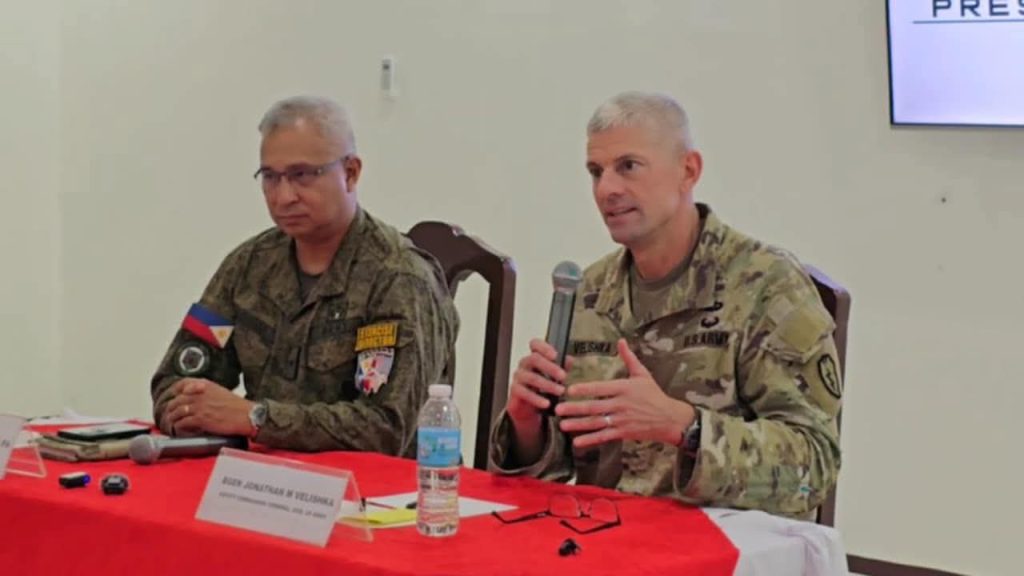
FORT MAGSAYSAY, Nueva Ecija — In a strong demonstration of bilateral military partnership, over 5,000 troops from the Philippine Army and the U.S. Army Pacific (USARPAC) are currently engaged in Salaknib 2025 Phase II, a high-impact joint military exercise designed to sharpen combat readiness and interoperability amid evolving regional threats.
During a press conference held Friday, June 13, 2025, at the Bulwagang Kabo Robert Garcia, EP Club House, 7th Infantry Division, Fort Magsaysay Military Reservation, Brigadier General Michael G. Logico, Exercise Director of the Salaknib-Balikatan (SABAK) 2025 Joint Exercise, emphasized the strategic depth and seriousness of the drills.
“We are rehearsing hypothetical reality that is serious in nature,” Logico stated, pointing to the complex scenarios the troops are training for — ranging from external aggression to humanitarian crises.
The Salaknib 2025 exercise, which kicked off in March and runs until July, is divided into two phases. Phase I took place from March 24 to April 11, and Phase II began on May 19 and will continue through July 20, with activities spread across Fort Bonifacio in Taguig City and the areas of operation (AOR) of the 5th and 7th Infantry Divisions.
Key components of Phase II include the Joint Pacific Multinational Readiness Center-Exportable (JPMRC-X), an advanced training platform where Philippine and American ground forces simulate real-world operational environments. Foundational warfare skills, operational maneuvering, live-fire drills, and reserve mobilization are core aspects of the training.
Brig. Gen. Jonathan M. Velishka of the 25th Infantry Division, U.S. Army, detailed the layered structure of the exercises. These include subject matter expert exchanges, the military decision-making process, convoy and terrain operations, and full-spectrum tactical missions.
“We’re seeing a deepening of joint operational capabilities. This is about building a shared playbook, ensuring we’re ready to move, act, and fight together if ever required,” Velishka said.
Coordination is also a central pillar of the exercise. Logico noted close cooperation with the Civil Aviation Authority of the Philippines (CAAP), the Philippine Coast Guard, and the Philippine National Police (PNP) to ensure safety and realism in air, sea, and ground operations. Local government units (LGUs), including provincial and barangay officials, are actively involved in planning and execution — a move hailed as essential for community integration and civilian protection.
SABAK 2025 also incorporates training in Humanitarian Civil Assistance, Information Operations, Counter-Intelligence, and Strategic Protection, echoing the Armed Forces of the Philippines’ (AFP) evolving role in both external defense and internal stability.
The large-scale exercise — participated in by approximately 3,000 Philippine Army and 2,000 U.S. troops — comes at a time of heightened regional tensions and increased calls for a stronger defense posture in the Indo-Pacific.
“Through exercises like Salaknib, the Philippine Army is not only enhancing its capabilities but also reinforcing our commitment to peace through preparedness,” Logico concluded.
As training continues through July, both forces reaffirm their shared dedication to safeguarding Philippine sovereignty and maintaining regional stability, underlining the enduring strength of the U.S.-Philippine military alliance.




